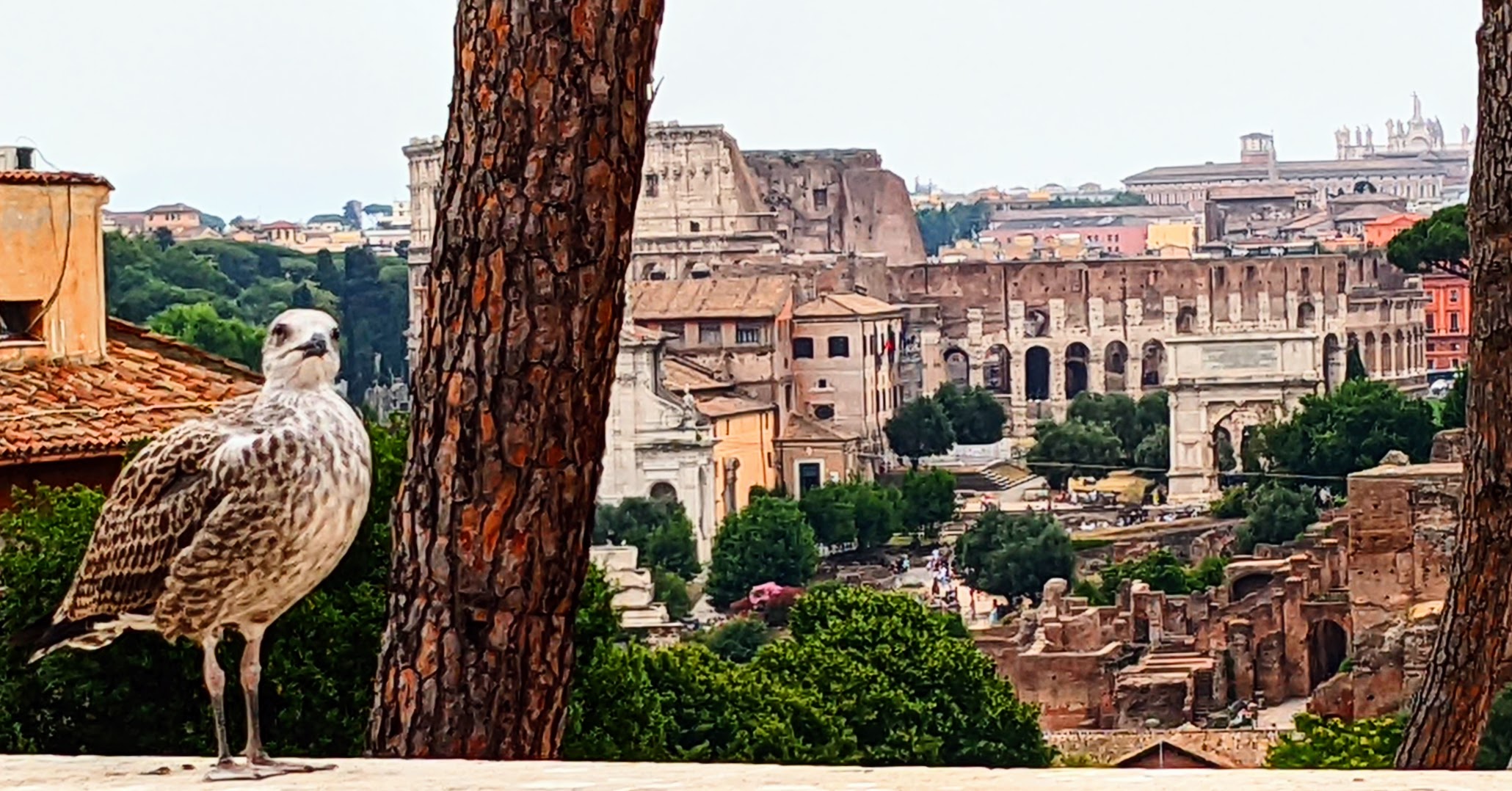June 3th – July 12th 2024
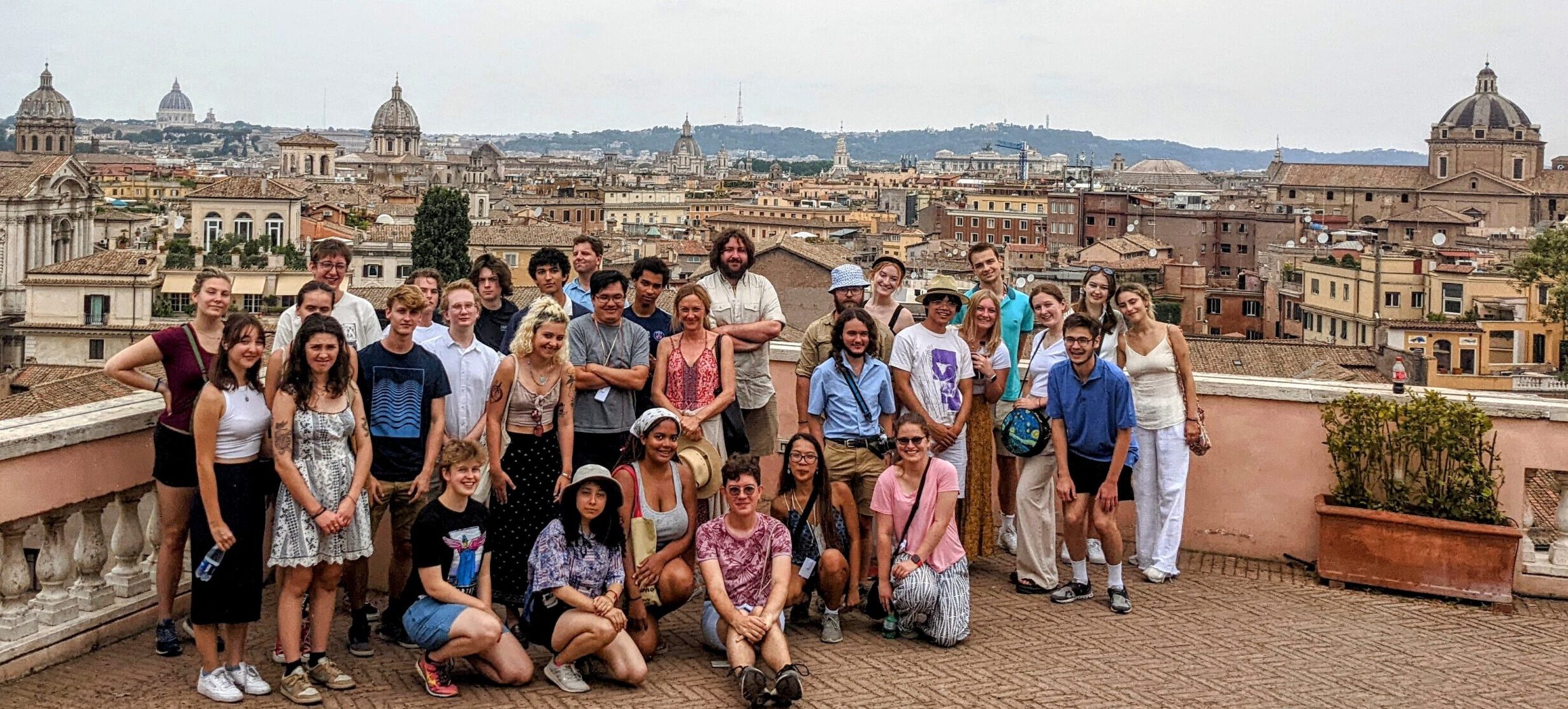
Course description
Greek political theory addressed life in small city-states. But the vast size of the Roman Empire presented political thought with new problems and questions of particular relevance to our own enormous modern political communities. Can a republic thrive and survive as it expands? Also, the development of empires from city-states impacted even on the kinds of ideals and human beings that could grow within them. What vices and what virtues are characteristic of the Republic, which of an Empire? And what aspects of Rome’s development speak to moderns?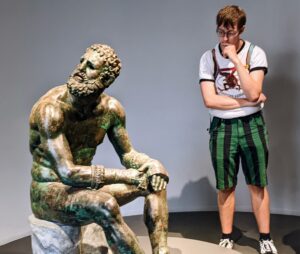
We will look at these questions in a variety of authors who have very different ideas of Rome. We begin with a few short selections from Thucydides’ fundamental reflection on the meaning of empire. Then we will turn to Alexander’s motives in creating a world empire that made the city-state irrelevant. We will then read Polybius and Livy’s histories of republican Rome, and Vergil’s epic on the prehistory of the Roman Empire, the Aeneid. We will then turn to St. Augustine’s radically critical view of Roman history and political theory, in the City of God. We will complete our program with great texts that reassessed Rome in new terms at the dawn of modernity, namely, Niccolò Machiavelli’s Discourses on Livy and the Roman plays of William Shakespeare.
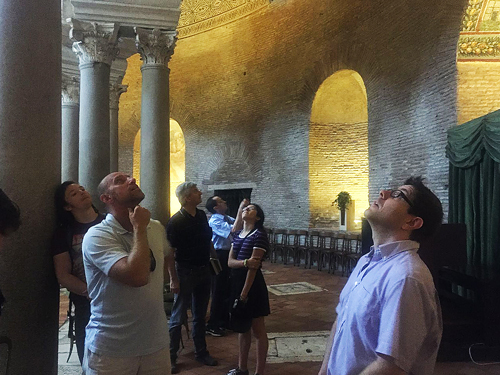
Rome is a fascinating backdrop for all of these readings. Of course, it offers the setting for the ancient history readings and for Shakespeare’s Roman plays. Rome is also central to Machiavelli’s understanding of his contemporary Italian history. More generally, if you have the right kind of background and support (which RILA will supply through lectures and tours), walking through Rome confronts you, not with a heap of historical details, but with other ways of thinking about the structure and aim of political life. The city itself impresses upon you the contrast of ancient and modern in a very concrete way, and the experience can force you to read the books differently. In addition, many art-works in Rome, both ancient and modern, illuminate the general themes of the course and help present them as living questions.
top of page
Course dates and format
The full course is six weeks in length. The course will start on Monday, June 3th, and it will end on Friday July 12th. Students are required to arrive in Rome by 7pm on Saturday, June 1st; they will be required to leave their apartments by 10am on Saturday July 13th.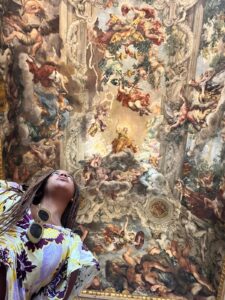
Classes are structured as seminars, discussion-based classes that meet in small groups led by a faculty member. The setting allows for a deeper inspection of the texts and issues studied, as well as a high level of student participation. Seminars meet for an hour and fifteen minutes, four days per week, in the morning.
Once or twice a week, before the morning seminar, students will get a brief pre-visit presentation intended to make a helpful link between the issues under discussion and the site to be visited in Rome that day. Informal discussion can follow then, or later on, when on site. Tours of Rome will take place after class, two or three times a week.
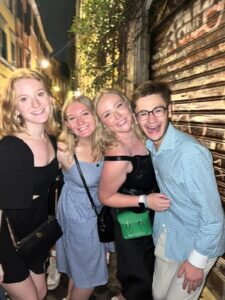 Once a week, on the day when there are no classes, students will take part in a longer tour in the city, or, alternatively, a full day trip out of Rome. The program includes two full day trips outside of Rome, to location of artistic/historic importance (e.g.; Naples, Orvieto, Tivoli).
Once a week, on the day when there are no classes, students will take part in a longer tour in the city, or, alternatively, a full day trip out of Rome. The program includes two full day trips outside of Rome, to location of artistic/historic importance (e.g.; Naples, Orvieto, Tivoli).
Weekends are free, with the exception of the one dedicated to the optional trip to Siena.
There will also be at least one formal guest lecture on the theme of the course.
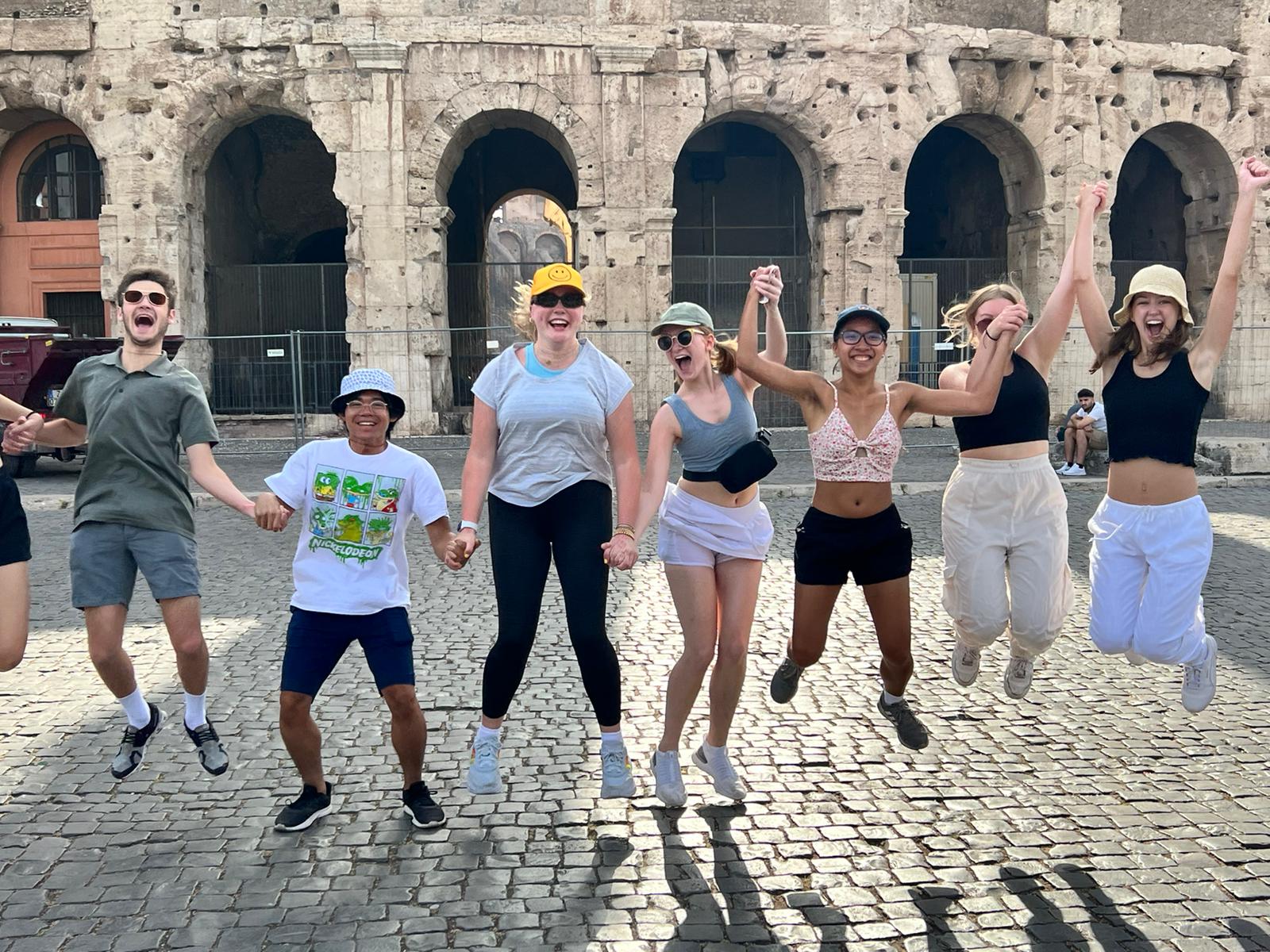
Excursions
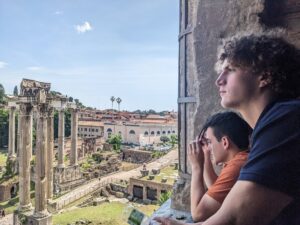
The class will go on a number of excursions each week. At least two excursions will take us outside of Rome, one to Orvieto, and another to Tivoli. An optional weekend excursion will take us to Siena. Students explore sites together with the seminar leaders, and with RILA’s academic director, Gabe Pihas. On some tours an art historian or classicist will join the group as well.
The introductory week of excursions is our fullest week. It will take us to the Pantheon and the Gesu’, where we will explore competing pagan and Christian cosmologies; to the Palazzo Altemps, where we will examine the development of Greek art; to the religious and political center of ancient Rome, the Forum; to the Palatine hill, above the Forum, where the emperors built their palaces; as well, we will look at Churches that are palimpsests, where Medievals built new structures using the older pagan ones as foundations, like S. Cosma e Damiano and S. Clemente. Finally, we will visit the major Churches next door to our classroom building, S. Ignazio and S.M. sopra Minerva, both of which are connected to the life of Galileo in Rome (who lived in the very building where we have class).
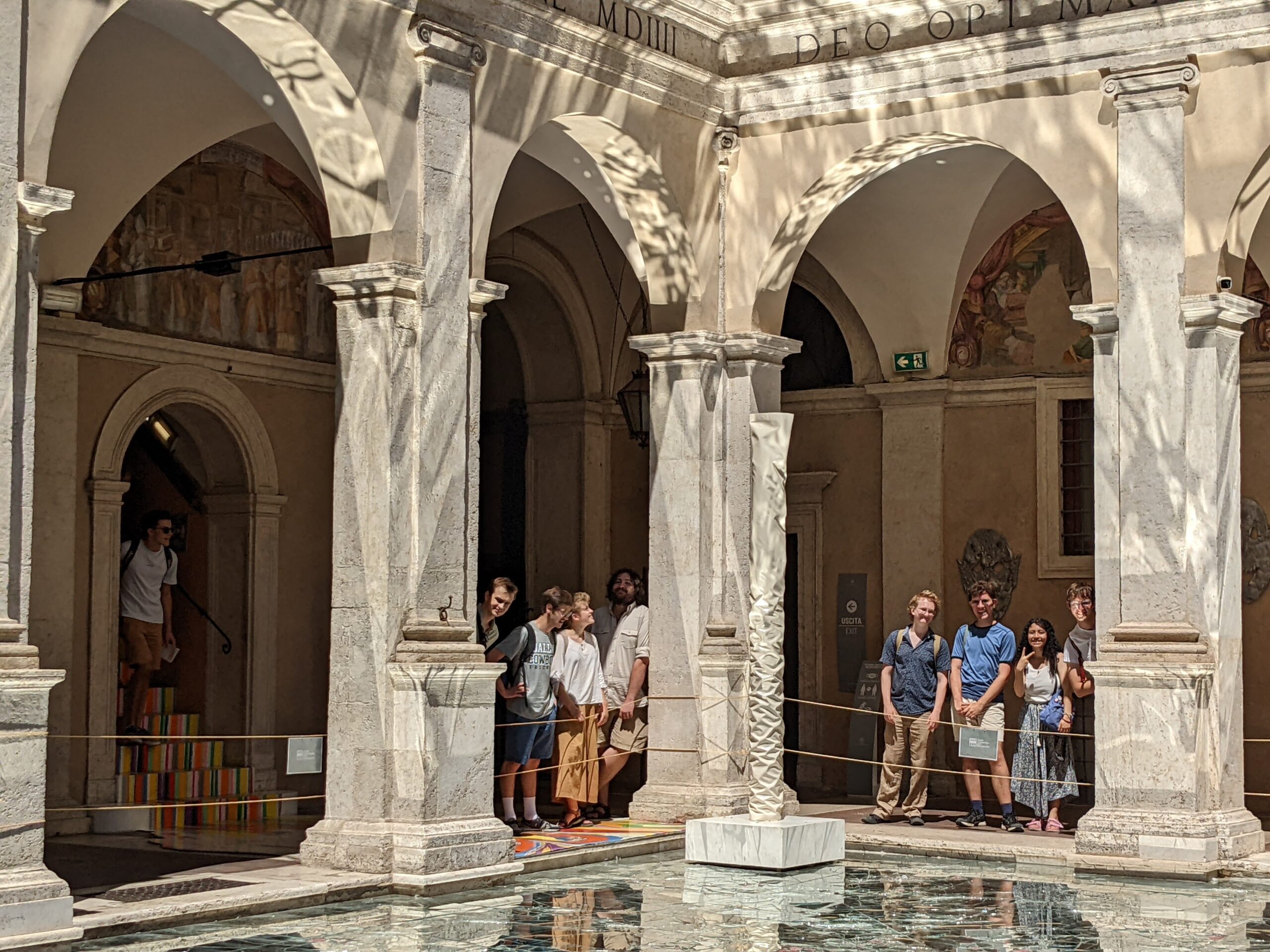
The second week of excursions will parallel our reading of Plutarch, Polybius, and Livy. We will visit the Capitoline, where the Rome described in Livy’s history grew up. We will look at Michelangelo’s architecture on the Capitoline, and understand his Renaissance synthesis of Classical and Christian. We will visit the Capitoline museum’s impressive collection of classical sculpture as well as Renaissance and Baroque painting, including a fresco cycle dedicated to the chapters of Livy we study. We will continue to explore Michelangelo’s architecture in his Church Santa Maria degli Angeli e Martiri, built directly upon ruins of the Baths of Diocletian. We will also look at Bernini’s sculptural and architectural work in the Cornaro Chapel, with the famous image of St. Teresa in ecstasy. Back in Rome we will hear a lecture on the politics and the art of Roman urban growth, in preparation for our exploration of Michelangelo’s reshaping of Rome. We will also visit the emperor Hadrian’s villa at Tivoli.
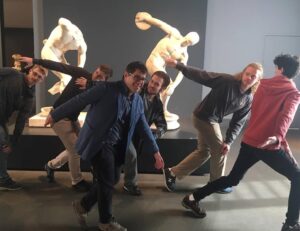
The third week of our time in Rome we will visit the Vatican and St. Peter’s Basilica. The vast collections of classical, medieval, renaissance, and baroque art will be of significance for our reflections on the theme of the course as a whole. In addition, the Vatican will help us reflect on the significance of the Church as the heir to the Roman empire. We will also visit a series of ancient and medieval Churches (Santa Costanza, Santa Maria Maggiore, Santa Pudenziana and Santa Prassede) in which ancient art transformed itself into Christian art, raising theological controversies about iconoclasm that resulted in major political changes in Europe and the Middle East. We will read Virgil’s Augustan poem, the Aeneid, and visit the most important symbol of Augustus’ political achievement, the Ara Pacis. We will also get a sense of the private side of Rome in beautifully frescoed private Roman houses discovered on the Celio hill.
In the fourth week, as we move from reading Virgil to reading Augustine, we will reflect on the politics of Constantine and his conversion of the pagan Roman empire into a Christian one. We will visit the arch dedicated to him in his lifetime, as well as the medieval fresco cycle on his donation of political power to the Church in Santi Quattro Coronati. We will visit the Lateran, established by Constantine, which has much art devoted to the rise and the fall of this political doctrine. We will visit Santa Sabina, the ancient church where Thomas Aquinas conceived and wrote his Summa Theologica. We will also visit the Churches in Trastevere painted by Dante’s contemporary, Pietro Cavallini, at the origins of Renaissance painting.
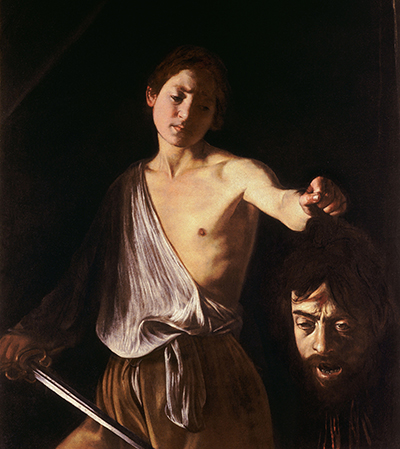
In the fifth week, as our readings turn to Machiavelli, we will turn to think about modernity. We will look at paintings by Caravaggio in Santa Maria del Popolo and San Luigi dei Francesi. We will also visit the Galleria Borghese, which has a large collection of paintings by Caravaggio. There we will look at Bernini’s redefinition of art in his revolutionary sculptures. The Borghese also has numerous other great works of Renaissance painting, including one essential to our theme, Titian’s Sacred and Profane Love. We will take a trip to Orvieto, a former Papal residence, and a center of study for Aquinas and the medieval Domenican order.
In the sixth week, we will reflect on the relation between ancient and modern in our Shakespeare readings. We will try to understand Borromini‘s new ways of presenting infinity in his architecture, and in the new, very modern understanding of the sacred that his churches suggest. We will visit most of his major works (Sant’ Ivo, San Carlo alle Quattro fontane, and Sant’ Agnese in Agone). We will also visit the Palazzo Barberini, built by Borromini and Bernini, now an important museum for Renaissance and Baroque art.
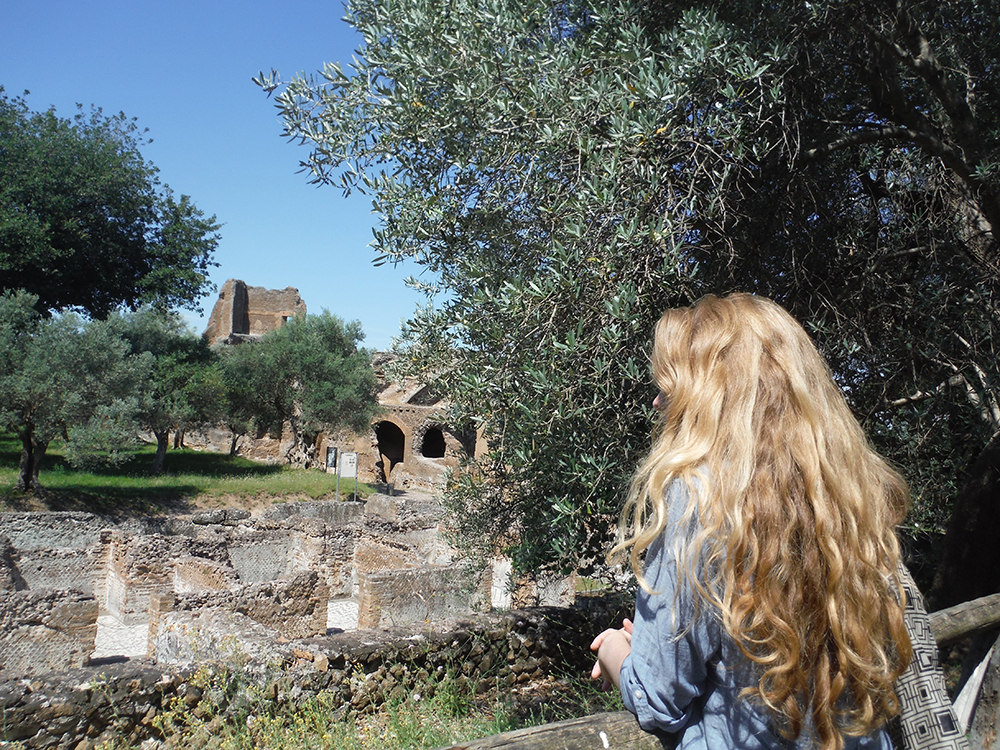
Optional trips
All students and faculty in both RILA summer class will be invited on a non-required, overnight trip to Siena.
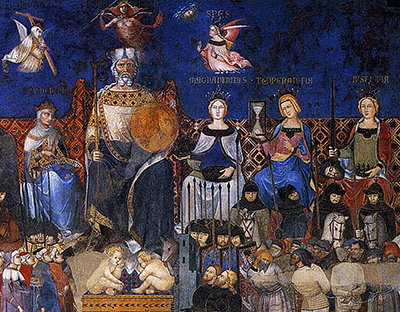
Siena is one of the most beautiful cities in Italy, as well as one of the most important sites for sacred art. The mere quantity of important art in this small city is vast and overwhelming. The Sienese style is of particular interest for our theme of beauty and the sacred, since it offers a more mystical version of the momentous developments in Italian late medieval and renaissance art. The work of Duccio in particular is both historically important and worth thinking about for the theme of our course. In Siena we can also visit the Palazzo Pubblico, which was the beginning of a new development in the idea of secular public life in the late middle ages, the birth of the commune and the end of the feudal order. Within the historic building are Lorenzetti’s Aristotle-inspired frescoes of good and bad government. These famous frescoes alone are worth the trip for readers of Aristotle’s Politics, and are of particular interest in connection with our Dante readings.
The optional trip requires paying separately for a bus trip as well as an inexpensive hotel. Details will be made available later, but we make sure any optional trips are very, very inexpensive. In past years nearly all participants in all RILA courses went on the optional trips.
top of page
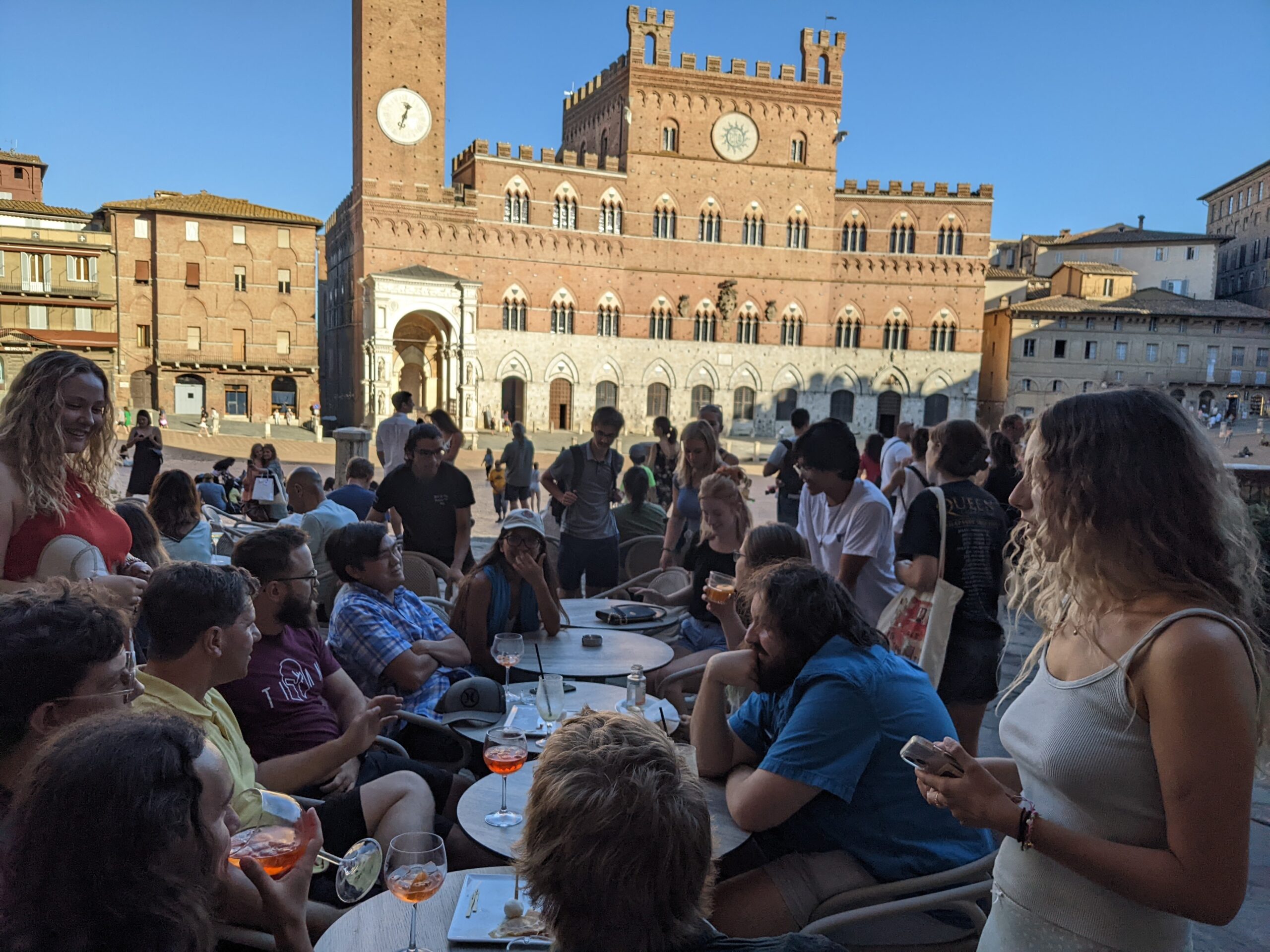
Readings
Thucydides, History of the Peloponnesian War (selections).
Plutarch, Life of Alexander.
Polybius, The Rise of the Roman Empire (selections).
Livy, Ab Urbe Condita (selections).
Virgil, Aeneid (selections).
Augustine, City of God (selections).
Machiavelli, Discourses on Livy (selections).
Shakespeare, Julius Caesar; Antony and Cleopatra; Coriolanus.
top of page
Seminar Faculty
Annie Thompson, St. John’s College, Santa Fe
BA summa cum laude, English and Catholic Studies, University of St. Thomas, 2014; PhD, English Language and Literature, University of Virginia, 2022; Visiting Assistant Teaching Professor, Villanova University, 2022-23; Teaching Fellow, St. John’s College, Santa Fe, 2023-present.
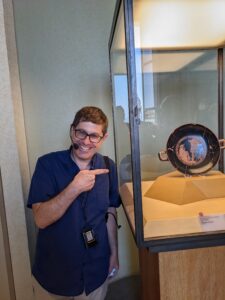
Gabriel Pihas, Academic director of RILA
Gabriel Pihas is a former student and tutor at St. John’s College in Annapolis, Maryland. He got his PhD. at the University of Chicago, and before that his M.A. at Yale. In 2001-2002 he was a fellow at the American Academy in Rome in Italian literature, and in 2003-2005 an assistant professor at the European College of Liberal Arts in Berlin, Germany. In addition to his specialty in renaissance literature, he has strong interests in ancient philosophy and in twentieth century continental philosophy. He taught at St. John’s College, Annapolis, from 2006 to 2012. And from 2012 to 2017 at St. Mary’s College in Moraga, California. In 2008 Mr. Pihas founded the Rome Institute of Liberal Arts, for which he has served as academic director ever since.
Lecture
TBD
…
top of page
Art historians
Gianpaolo Castelli
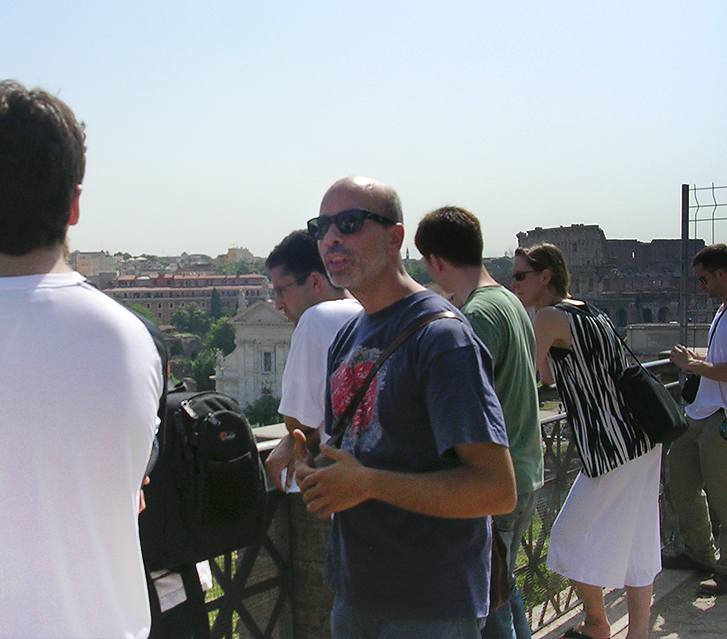
Gianpaolo Castelli currently works in the Office for Museums, Libraries, and Archives at the Lazio Regional Department of Culture, where he took up a post as art historian in September 2007. He has worked for many years in publishing as well as in educational projects for students and adults aimed at appreciating the cultural heritage of Italy. After receiving his degree in Classics in 1995, he went on to specialize in Etruscan, Greek and Roman Art history. More recently he received a masters degree in Paleography and Archival Science, and is currently researching late Medieval and early Renaissance Rome’s cultural milieu.
Teresa Calvano
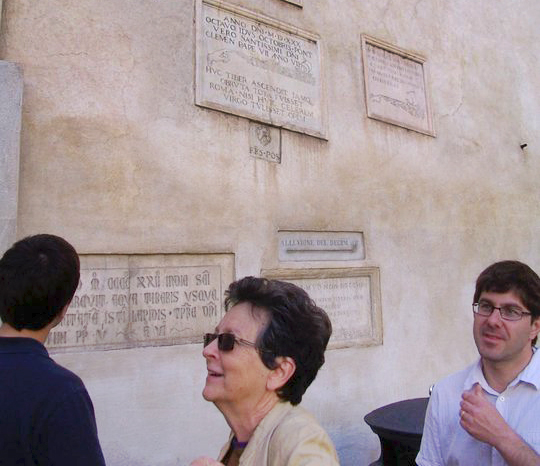
Art historian, President Emeritus of the Italian National Association of Art History Teachers (ANISA), President from 2001 to 2008. In 1977-78 she had a fellowship at the Cultural Heritage Department of Unesco, in Paris. From 1980 to 2003, she has taught art history in Italian “licei”. From 2006 to 2008 she has taught contemporary art at the University of Rome “Roma Tre”, teaching special courses for future art history teachers. Professor Calvano has published on numerous subjects of modern and contemporary art history, including women artists. She is also an expert on art teaching pedagogy and has published several articles on that subject.
Italian language course
Although RILA students are not required to know any Italian, and all the readings will be done in English, we encourage you to sign up for an Italian language class. It may make your experience in Rome more meaningful and interesting. For this reason, RILA organizes an optional basic Italian course for its students. Classes take place twice a week, lessons vary from 60 to 90 minutes, depending on the size of the group. The course is designed to give students a basic knowledge of Italian grammar and vocabulary. It will focus on immediate language needs in daily life, with attention to the development of listening, understanding and speaking skills. For the course’s cost, please check the application and fee page.
